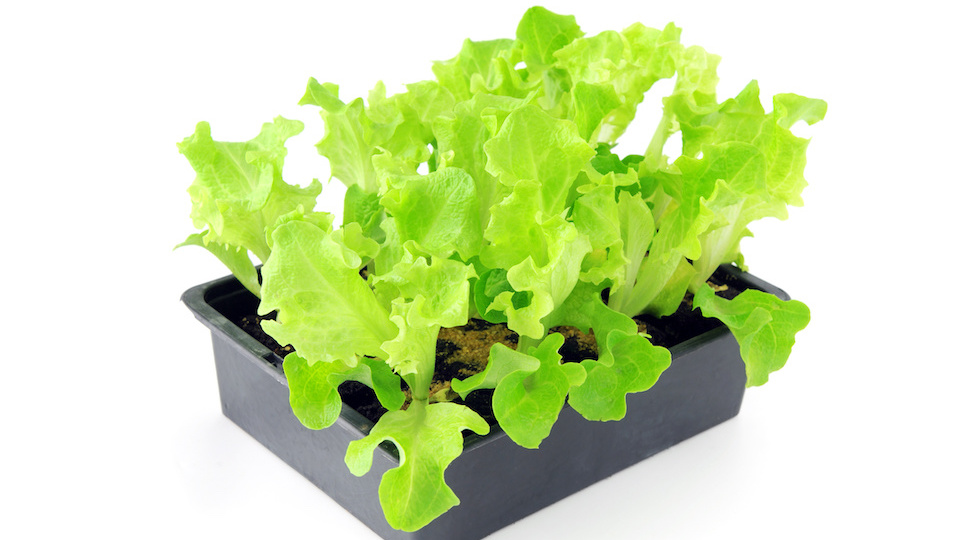With spring barely a blip on the calendar, and the fire roaring to chase away the winter chill, you are likely starting to miss fresh produce from your garden and spending time with your hands in the dirt. If you’re tired of the barely edible, pesticide-laden, and sometimes E. Coli-ridden lettuce in the grocery store and miss growing your own food, I have some good news for you. You don’t have to live in the tropics or have a greenhouse to grow lettuce through the winter, with these simple tips, you can have a bountiful leafy green harvest in your very own home. All year long.
The best type of lettuce for indoor growth
Though any lettuce will grow indoors with proper care, loose-leaf and butterhead varieties will thrive above others such as iceberg, romaine. If you prefer a little more crunch in your salad, feel free to add some other veggies such as carrots and cabbage. When you are selecting your seeds, try to search for varieties that mature in 45 days or less. Varieties that are specifically for baby leaf production will also be great options.
Best varieties:
- Merlot
- Baby Oakleaf
- Lollo Rosa
- Tom Thumb
- Garden Babies
- Red Deer Tongue
- Black-Seeded Simpson
- Salad Bowl
- Any salad lettuce mix
Choose location: Lettuce, like most vegetables, is a light-heavy plant and needs at least 12 hours of direct sunlight every day. Place it in a bright, south-facing windowsill or use a grow light if you are in a dark location or don’t have any window space. A clear sign that your seedlings need more light is if they become spindly and leggy and start to stretch out towards the sun. Consider supplemental lighting if this occurs.
Temperature: Light isn’t the only consideration when it comes to selecting the perfect location for your lettuce plants. Be sure to keep them in an area that isn’t too hot to too cold. For instance, a drafty window or right next to a heater is probably not the best choice. Remember, lettuce can stand a little cold, so if you have a sunroom that is a few degrees colder than the rest of your house, it may actually be the perfect location.
Proper trays: Since your loose-leaf lettuce will not be putting down lasting roots, it is best to plant the seeds in a shallow tray with good drainage. Instead of buying specialty seed starting containers, consider repurposing plastic you already have by poking drainage holes in the bottom. This will help you save money and reduce your plastic waste. Keep in mind, soil depth of four inches is optimal, so it is best to find containers that fulfill that need.
Soil is important: Though lettuce seeds are fairly hardy, you will get a better crop and have more success if you grow them in a soil that is specifically formulated for seed starting. Stay away from potting mixes, as these are often too coarse and don’t contain enough nutrients.
Planting: Lettuce seeds are sown very shallowly and need light to germinate. So instead of pushing them into the soil as you would with other seeds, simply scatter them on the surface, lightly pat them down and cover with a thin layer of soil.
Thinning: Because lettuce seeds are so small, you will have to thin the plants once sprouts appear. Simply pull up any crowded growth so that the sprouts are about 1 inch apart. This will give them plenty of room to grow and ensure that each plant gets adequate nutrients.
Succession planting: Staggering planting of your lettuce seeds will ensure that you have a fresh, mature harvest throughout the winter. Plant a new container every week for a month and then harvest lettuce as it matures. Repeat as desired.
Watering: Lettuce seedlings like to be kept moist but not soaking wet. Instead of watering them from the top as you would typically, use a watering tray to keep rot and fungal disease from developing.
Harvest tips: After around one month (or slightly more) your lettuce will be ready to harvest. Using sharp scissors, cut the lettuce about ½ an inch above the soil surface. Soon, you will be able to enjoy another harvest from the very same plants.
Do you like to grow lettuce indoors? Let us know in the comments below!
-Susan Patterson




